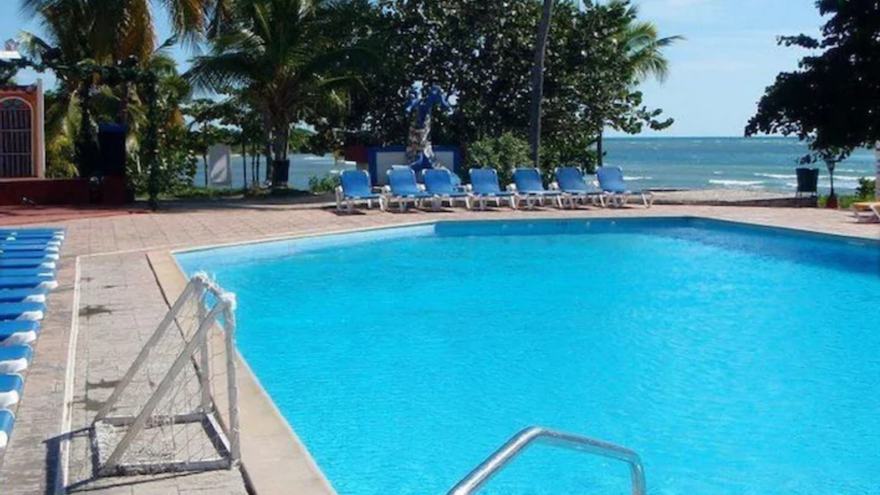
![]() 14ymedio, Havana, 15 September 2020 — Havana’s efforts to sell the island as a safe destination are faltering after the weekend revealed a coronavirus outbreak in a Trinidad hotel that added two more positives cases this Monday. In total, there are already seven infected in the Village Costasur, three workers, two vacationers and two contacts of those affected from Ciego de Ávila, who visited the facilities at the end of August.
14ymedio, Havana, 15 September 2020 — Havana’s efforts to sell the island as a safe destination are faltering after the weekend revealed a coronavirus outbreak in a Trinidad hotel that added two more positives cases this Monday. In total, there are already seven infected in the Village Costasur, three workers, two vacationers and two contacts of those affected from Ciego de Ávila, who visited the facilities at the end of August.
The situation in Sancti Spíritus, which had been free of coronavirus for four months, has become complicated in recent weeks with a total of 14 active cases, which has led to extreme measures. Among the most prominent, the closure from Monday of several schools and restrictions on personal mobility. Its neighboring province Ciego de Ávila is currently the territory with the highest infection rate on the island.
But the main asset of Sancti Spíritus is tourism in the colonial city of Trinidad, which has been greatly affected by the pandemic and was just beginning to shyly raise its head when this new focus emerged in a hotel.
The news has coincided with the promotional launch of the new Meliá Trinidad Peninsula hotel. Francisco Camps, deputy director general of the Spanish company in Cuba, released a statement last week on the upcoming opening of the project, “which will have 401 spacious rooms equipped with excellent technological features.”
It is unknown, although it is hinted, if the promotion of technology is part of the hotel’s strategy for teleworking packages, an option that Meliá will offer in Cuba on a trial basis and which are yet to be defined. It was highlighted that the facility will have an exclusive section called The Level with personalized and luxury services, an option apparently intended for an international tourist who, today, is unknown when they will be able to arrive on the Island.
The statement emphasizes the importance of Cuba as one of the safest destinations in the world, but the plot on which the Meliá Peninsula stands is just 500 meters from the much more modest Village Costasur, where the outbreak occurred.
Cuba opened to national tourism on July 1, with the exception of Havana, with accommodation packages in mid-range hotels throughout the island, while opting to segregate foreigners by sending them to the Largo, Guillermo, Coco, Cruz and Santa María keys. To do this, and since the borders are still closed with no provision for reopening, travelers must arrive on charter flights.
On August 1, the first ship arrived from the Bahamas, and it was announced with great fanfare by the authorities of the Ministry of Tourism that certified as “safe facilities” several hotels that must perform PCR tests and have a doctor in the accommodation.
In addition, the staff must alternate weekly work shifts with isolation, wear a mask at all times, and undergo rapid result tests for Covid-19.
But these controls were not exclusive for foreigners. From August 10, a protocol to guarantee security in establishments for nationals came into force. The Cubans had to show proof of a negative rapid test result, carried out at most 48 hours before the trip.
To get the test, they had to appear at the polyclinic of their municipality with the hotel reservation.
The travel agencies also had to take the temperature of the tourists and inform the authorities of possible symptoms that made it appropriate to monitor or prevent the trip. In addition, the travelers themselves must complete the customer’s declaration, as a sworn statement of their health and as a guarantee of their origin (an area without quarantines and risk-free). But something in the protocols has gone wrong in the case of Costasur.
For this year, Cuba expected to receive 4.5 million international visitors and reverse the decrease of 9.3% of 2019, when 4.2 million tourists traveled to the country, 436,352 fewer than in 2018, according to official data, but the pandemic has broken any forecast.
In recent days, the first Canadians have arrived on the island, to whom it has been specifically reiterated that Cuba was a safe destination, since they are the main market in Havana; and soon a flight will arrive from Russia, the country with the highest growth in reservations on the Island.
In addition, this Monday, the official press reported Cuba’s participation in the International Tourism Industry Exhibition in Canton, China 2020. Ambassador Carlos Miguel Pereira Hernández stated that “the exhibition was very important to promote the Cuban tourist destination, especially in the modality of Health tourism, as well as several recognized products such as Varadero and Caney rums, Caracolillo coffee and Habanos “.
Tourism is the third largest source of income for Cuba, behind medical services and remittances, and last year it had a turnover of 2.6 billion dollars. But this year the numbers are projected to be dire for an industry that has fallen precipitously around the world. The World Tourism Organization (UNWTO), a UN body based in Madrid, last July estimated losses in the sector at 320 billion dollars during the first five months of the year. And there is nothing to suggest that the later months in the year will be any better.
____________
COLLABORATE WITH OUR WORK: The 14ymedio team is committed to practicing serious journalism that reflects Cuba’s reality in all its depth. Thank you for joining us on this long journey. We invite you to continue supporting us by becoming a member of 14ymedio now. Together we can continue transforming journalism in Cuba.
